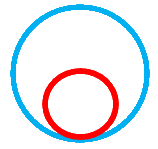Ideating new service concepts can be a challenging process. You’re probably running, say, innovation competitions to get ideas. But often, if we are realistic, the results are not what we need. Is there a more systematic approach we can take? One that allows us to discover ideas or even to better understand competition ideas. It turns out that if we link an old idea together with a new one, we get a powerful tool.
What is a new service concept?
Remember that our services innovation model has five dimensions (see Figure X, and this article for a longer recap).
One of those dimensions is the new service concept, up there in the top right. This is the one that fundamentally changes the customer promise between you and your customers.
But, how do we discover these new concepts? We could use the standard ideation techniques. Such as running innovation competitions. Better, we can link together a couple of key tools/concepts and come up with a powerful new tool:
- Gallouj & Weinstein saw services as a set of characteristics. And that innovation meant doing something with those characteristics.
- Blue Ocean Strategy Canvas plots the relative strength of competitors against identified industry standard factors.
- Blue Ocean Four Action Framework is used to identify a blue ocean (non-compete area) by looking at the industry factors and deciding if to raise, reduce or eliminate an existing factor or create a new factor.
The link is to think of service characteristics as the factors in a blue ocean strategy canvas. Now we have a tool to explore innovation of new service concepts.
So, our first step is to think of our service as a set of characteristics.
A Service as a set of characteristics
Gallouj & Weinstein’s paper, Innovation in Services, builds the picture that services are a set of vectors of characteristics. And that there are four of these vectors representing: service (Y) and technical (X) characteristics as well as competences for the service’s provider (C) and customer (C’). You can see this in Figure X.

The intuition behind this (perhaps complex looking) diagram is this. Firstly this model is showing that services are inseperable and that value is usually co-produced. The customer and provider competences are represented by what appears to be a close representation of vector multiplication (lets be geeky: to be true vector multiplication then the number of C’ – the q – needs to equal the number of C – the p. Its unlikely the case in the real world that the customer needs as many competences as the provider in order for the service to be provided).
The external characteristics (Y) – those experienced by the customer as the end user perspective – come about through a potential combination of routes.
Next, it shows us that the external characteristics
it could result from just the competences of the provider. For example a lawyer providing legal advice.
Or it could be because the competence the provider has is used upon some technical characteristics.
because some combination of Service characteristics (sometimes called the final or use characteristics). And denoted as Y. These are the characteristics of the service from the end user perspective. And they can be broken into three categories. First there are main service characteristics. Then there are complementary service characteristics. Finally there are externalities. These are the undesirable characteristics, for example pollution produced when using a taxi service.
X – the technical characteristics
Blue ocean Strategy canvas
Blue Ocean Strategy has a number of tools. One is the Strategy canvas.
[figure of the canvas]
Along the
Blue ocean Four Action Framework
Another tool in the Blue Ocean Strategy bag is the Four Action Framework.
[figure of tool]
As you can see in Figure X, the tool works on attributes. For each service characteristic we can decide to raise

